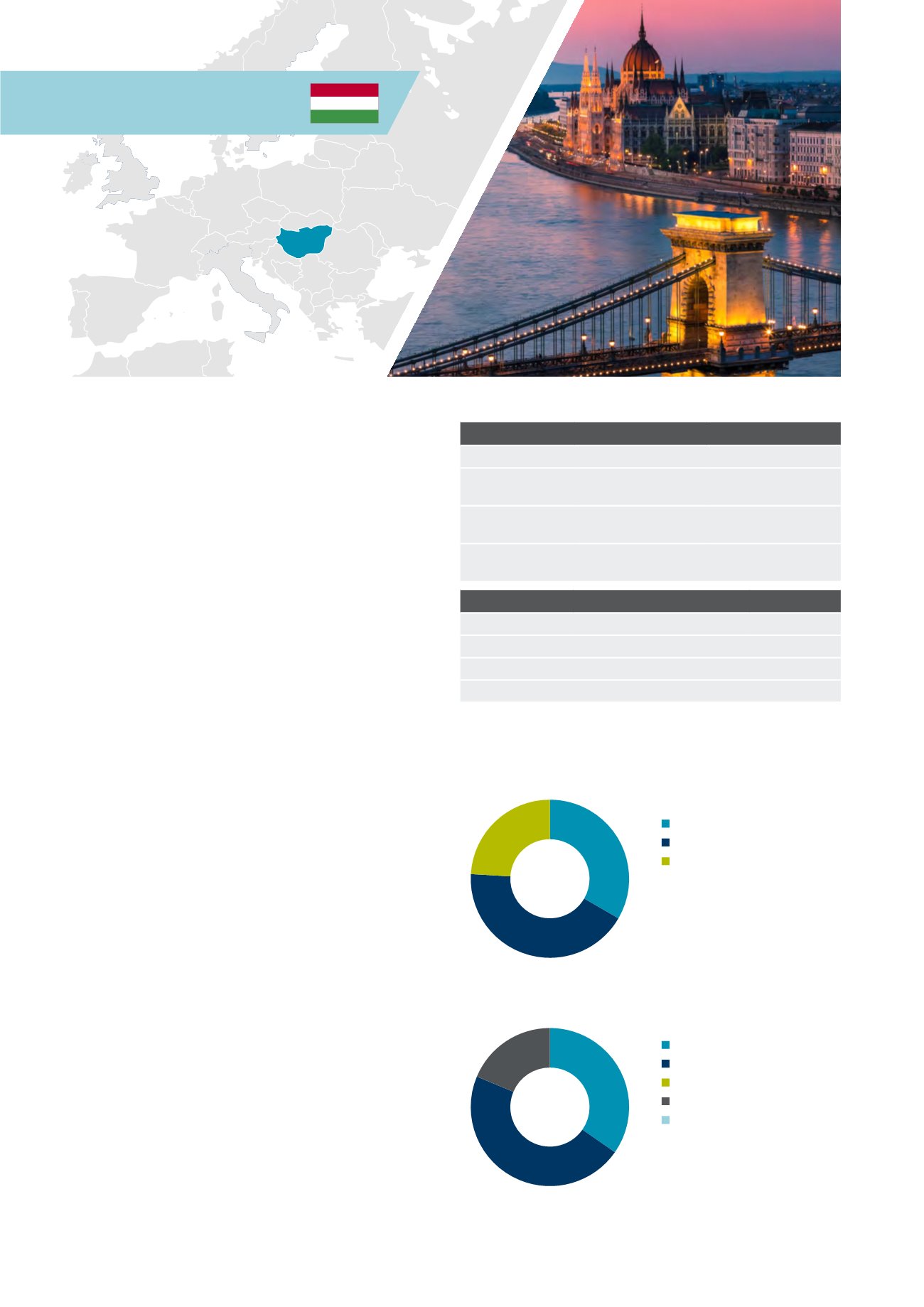

Hungary
Despite being smaller in size compared to its
neighbouring markets of the Czech Republic
and Poland, Hungary benefits from a relatively
high share of cross border investment, notably
from Austria, Germany and the United-
Kingdom. Given its size volumes are lower
though. Activity is strongly focussed on
the capital, Budapest, with limited activity
elsewhere.
Hungary has an active domestic investor base,
including private individuals, focussing on smaller
office or retail assets with long leases to international
tenants. There is an active listed sector, but this is
comparatively small compared to private individuals
and funds. Institutional investors represent a small
portion of the market, but there are signs of growth.
Given its relative size, access to product can be
challenging at the core end of the market. There
is also high activity in the distressed sector where
owner occupiers are able to find suitable vacant
properties at favourable price levels.
Offices usually dominate the investment market, with
industrial volumes also relatively strong. However,
retail volumes were in 2014 the larger ones.
Market sizing
Hungary
Europe
Invested stock
(Total stock)
EUR 17bn
(EUR 71bn)
EUR 3,335bn
(EUR 8,201bn)
Liquidity ratio
(10y average)
2.3%
(2.9%)
5.6%
(4.6%)
2014 volumes
(10y average)
EUR 0.4bn
(EUR 0.6bn)
EUR 187bn
(EUR 142bn)
Market pricing – Budapest (Q4 2014)
Office
Retail
Industrial
Current Yield
7.50%
7.50%
9.00%
Min/Max (10y)
5.75-8.25% 5.75-8.66% 6.50-9.25%
Yield definition
Net initial yield
Source: DTZ Research
Investment activity by source of capital, 2014
Investment activity by asset type, 2014
Source: DTZ Research
Source: DTZ Research
Domestic
Non-European
European
Office
Mixed Use
Retail
Industrial
Other
24%
33%
43%
19%
35%
46%
48 Investors Guide to Europe 2015


















